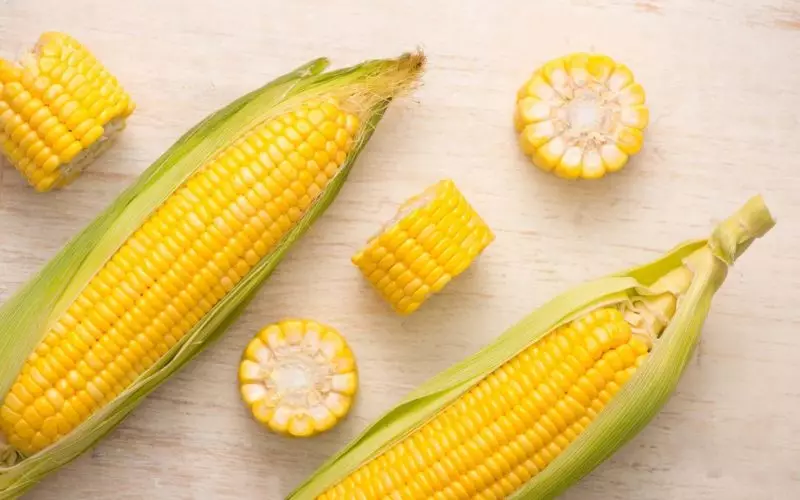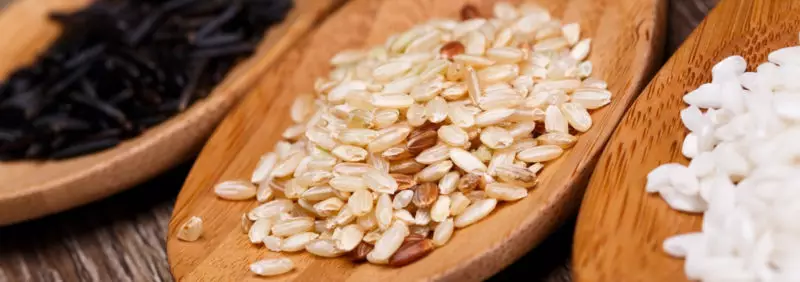
There are said to be about 40,000 varieties of rice on the market. You’re probably familiar with many of the common varieties like jasmine rice, sticky rice, and brown rice. Despite there being so many varieties, all rice can be put into one of 3 categories according to the degree of milling [1]:
- Paddy rice (completely unprocessed) – it’s indigestible and not used for human consumption, as the kernel, germ (the nutritious core containing vitamins, minerals, and healthy oils), endosperm (starchy central part of the grain), and the bran (part of the husk) are covered in a hard hull.
- Brown rice (also called whole kernel rice) – only the hull is removed from the grain. The entire kernel is preserved, and the bran, germ, and endosperm are not removed.
- White rice (the most processed and refined type of rice) – only the endosperm of the kernel is left. Bran, germ and hull are removed.
Many people find the choice between white and brown rice difficult, especially when it comes to the impact of their properties on health. So which type of rice is healthier for you?
This article will compare the nutritional characteristics of brown and white rice and will give you a better understanding of the properties and health impact of each food.
Let’s get started!
White Rice vs Brown rice Comparison
The information in this section is originally provided by the USDA Food Data Central and refers to 100 grams of medium-grain cooked rice, which equates to a ½ cup (unenriched white and brown). [2] [3]
Keep in mind that as white rice is a significantly processed product, it is often enriched with vitamins and minerals. If your rice is enriched, that information is likely stated on the label of the product.
Macronutrients
| Nutrient | White rice | Brown rice |
|---|---|---|
| Carbs | 28.6g | 23.5g |
| Protein | 2.38g | 2.32g |
| Fats | 0.21g | 0.83g |
| Fiber | 0.4g | 1.6g |
Source: USDA Food Data Central, per 100 grams of cooked rice [2] [3]
One ½ cup of white rice contains 2.38 grams of protein, 0.21 grams of fats, 28.6 grams of carbohydrates, and 0.4 grams of fiber. In comparison, brown rice contains a similar amount of protein, 2.32 grams, but it is slightly richer in fats, 0.83 grams of fats. Brown rice has fewer carbohydrates – 23.5 grams, and has more fiber – 1.6 grams. When looking at the big picture, these two types of rice have generally similar macronutrient profiles.
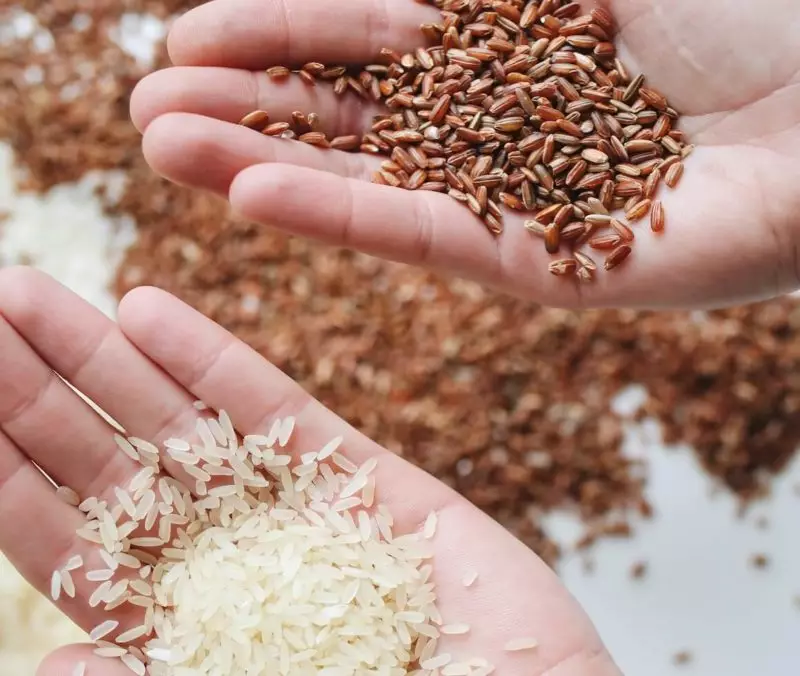
Micronutrients
| Nutrient | White rice | Brown rice |
|---|---|---|
| Calcium | 10mg | 3mg |
| Iron | 1.19mg | 0.56mg |
| Magnesium | 12mg | 39mg |
| Phosphorous | 43mg | 102mg |
| Potassium | 35mg | 86mg |
| Copper | 0.069mg | 0.105mg |
| Zinc | 0.49mg | 0.71mg |
| Thiamin | 0.162mg | 0.177mg |
| Riboflavin | 0.013mg | 0.069mg |
| Niacin | 1.467mg | 2.548mg |
| Vitamin B6 | 0.092mg | 0.122mg |
| Folate | 58mcg | 9mcg |
Source: USDA Food Data Central, per 100 grams of cooked rice [2] [3]
Brown rice likely has a considerably higher content in the following micronutrients compared to white rice:
- Magnesium
- Phosphorous
- Potassium
- Riboflavin
- Niacin
The two types of rice have similar amounts of thiamin, copper, and zinc.
Neither brown rice nor white rice contain any vitamin A, C, K, E, D, and B12.
Calories
Considering that white and brown rice have similar macronutrient compositions, they only slightly differ in their caloric load. While 100 grams of cooked brown rice contains about 112 kcal, the same amount of white cooked rice has 130 kcal.
Generally, in a 2000-calorie diet, the caloric difference between white rice vs. brown rice is minimal. This illustrates that you can’t only look at calories when making a dietary choice.
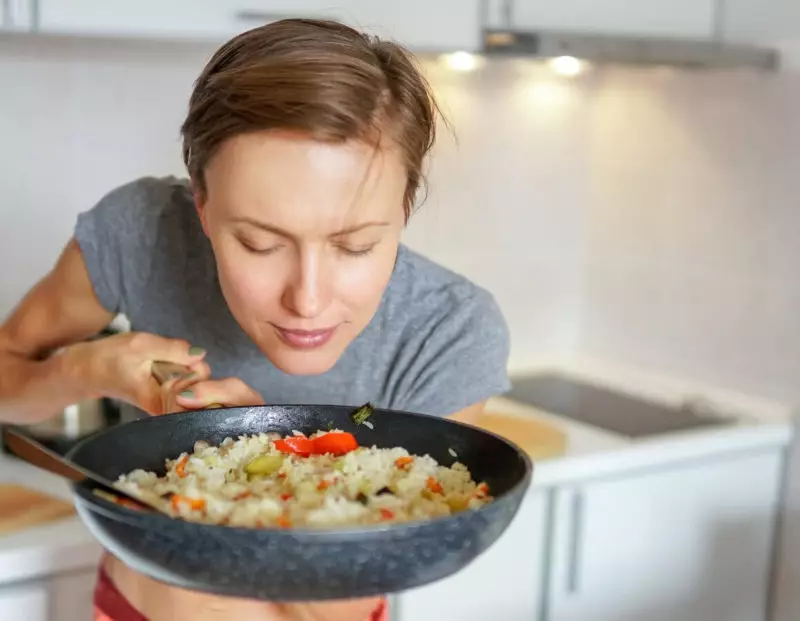
Fiber
Fiber content is one of the most important factors when comparing white rice to brown rice. While white rice does not contain any dietary fiber (because the fiber-containing parts of the grain have been removed), 100 grams of brown rice can supply you with about 7% of recommended daily fiber intake (1.8 grams).
The effects of regular dietary fiber intake on human health include supporting a balanced cholesterol profile, improving blood sugar control, balancing gut flora, improving satiety (the feeling of being full), lowering risk of obesity, enhancing digestion, and improving bowel regularity. [4]
Glycemic load (GL)
According to the website Nutrition Data, brown rice has a slightly lower glycemic load than white rice (GL 11 vs. GL 16). [5] [6] Both foods still fall under the category of medium GL (from 11 to 16). [7]
GL is important to look at in order to identify how much the food raises your blood sugar levels. This is especially important for patients with diabetes or other health conditions associated with high blood sugar and poor glycemic control. [8]
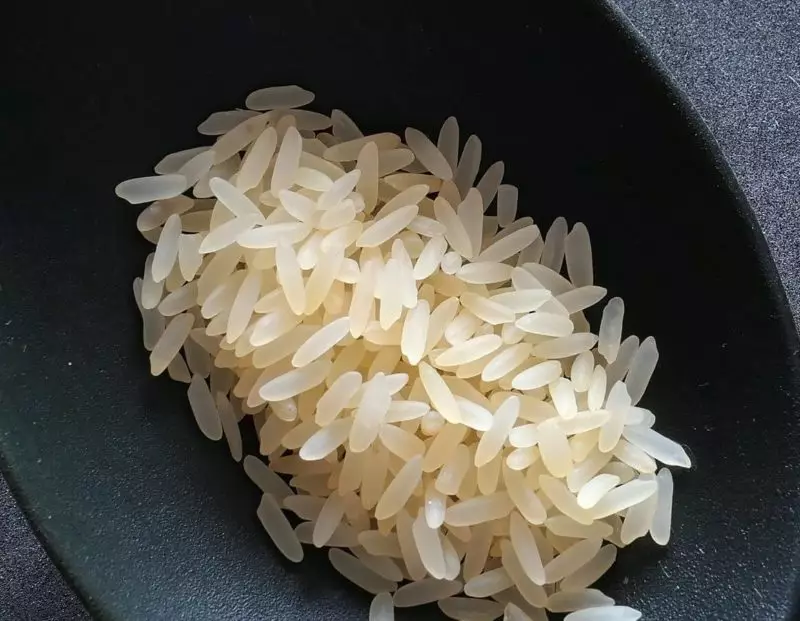
Is rice good for you?
White rice is a highly processed and refined grain. It is rich in starch and poor in fiber. It turns out that excessive consumption of white rice could be associated with various health conditions. In contrast, brown rice, with its high fiber content, can actually support health and nutrition if eaten in moderation.
That being said, various scientific sources suggest that substituting white rice with brown rice could increase daily fiber intake and positively affect overall health and wellbeing. A 2019 review paper published in the Journal of Comprehensive Reviews in Food Science and Food Safety notes that whole brown rice contains significantly higher amounts of vitamins, minerals, polyphenols (antioxidant plant compounds), and fiber. [10]
Based on that, the source suggests that consumption of whole (brown) rice instead of white rice may be associated with the following health effects:
- Improved glycemic control
- Anti-oxidant effect
- Cholesterol profile balance

Takeaway
Brown rice is the healthier, more nutritious whole-grain version of rice. In the long term, brown rice consumption in moderation is recommended to increase your intake of whole-grain foods and supply the body with valuable plant compounds and macro-and micronutrients. However, eating white rice from time to time is absolutely fine!
Also, don’t forget about portion control! Large portions of either white or brown rice contain excess carbs and extra calories, so remember to always eat a balanced diet and exercise moderation when portioning out your meals. Consult your dietitian on the types of food that are suitable for you and your current health condition!


